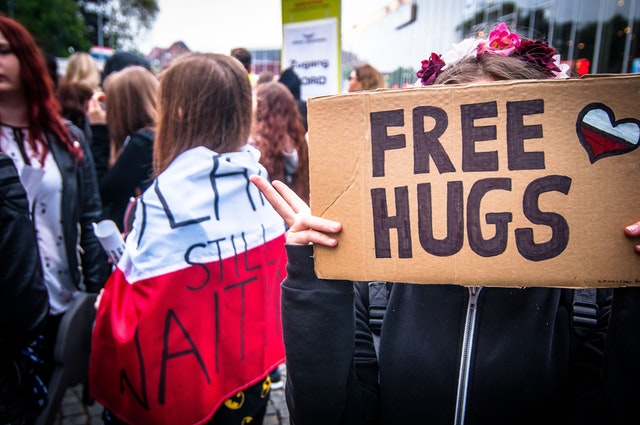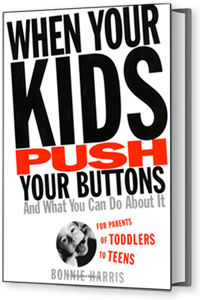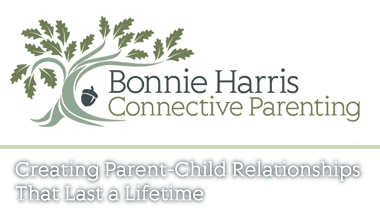Every parent in the US has justified fear for their children’s safety—as well as their own. Even though mass shootings are sparse, when two happen in one weekend, it feels like an everyday occurrence. As we enter the new school year, we wonder—could it happen here? Walking into a big box store or fast food restaurant can trigger the same fear. What is a parent to do or say to a child in this climate of gun violence? I don’t presume to have answers, but I share my thoughts on how to help ourselves and then our children manage horrible situations beyond our control.

We must remind ourselves that “normal” life is more prevalent than mass killings. Although they are on the rise, mass shootings account for less than 2% of annual gun deaths according to gun violence research. Fear and worry about shootings happening in their safe little town would not have helped the victims of these tragedies. Easy to say, I know, but if we are full of fear, that fear communicates to our kids. They become anxious. Our goal is to transmit messages of confidence and to maintain an open and honest family environment where all feelings are heard and conversation accepted.
Put Your Oxygen Mask on First
Your fears are valid, of course. They must be heard and accepted by other trusting adults. Your children do not know how to handle your fears. It is not their job to handle your fears. Try a self-evaluation. If fear arises when your mind focuses on a specific tragedy, you are in good company. If your fear prevents your mind from traveling anywhere but these tragedies, then it may be important to seek professional help. When our fears drive us, they leak out and unintentionally affect our children. To provide the safe and honest environment your children need, handle your own feelings so you can handle their’s.
Keep in mind that what you need is not necessarily what your children need. We all process fear and information differently. Some children want to talk a great deal and like to have plans laid out for what to do if something bad happens. Others don’t want to talk at all. Follow their lead, listen to their questions rather than make assumptions about what they must be feeling. Your agenda can get in the way of open communication.

Boundaries are critically important when addressing difficult emotions in children. You are more helpful when you do not get in their fear or pain with them. In other words, if they express difficult emotions, know that pain is theirs — it’s not your job to take it away. When you can draw this boundary, your child doesn’t have your emotions to feel responsible for, and you are a much better helper. If you take responsibility for your child’s upset, then you will do everything you can to take it away. Not conducive to allowing expression of it. If it doesn’t go away, that upset becomes your fault. If you dread that, you will dismiss important emotions that need your support. You need to be able to talk about what is happening without drowning in your own upset or fearing your child’s responses.
Keeping Communication Open and Safe
Do you spend more time checking on what your child is doing or not doing, telling them what must be done and not done, focusing on the agendas of the day, or do you make time to truly listen to your child? Do you validate your child’s feelings or try to explain them away?
Take advice from Mr. Rogers who exuded patience, took care about the words he chose and the tone of his voice, the way a child’s imagination might interpret what was happening around them. He treated children as fully worthy of his attention and time.

Mr. Rogers Neighborhood premiered in a violent year in American history in the aftermath of the assassinations of Martin Luther King Jr. and Robert Kennedy. In a program he recorded for parents, he said, “The best thing in the world is for your children to be included in your family ways of coping with the problems that present themselves anytime, but particularly now, in this very difficult time in our nation.” He offered: Some families might process tragedy by participating in public ceremonies or vigils. Others might want to take a long walk together. Comfort could be as simple as an embrace.
When it comes to talking about gun violence, a safe and open relationship is essential. If your child thinks you don’t have time, don’t care about what is important to her, if she feels judged and has privileges taken away when you don’t like something she does, you are not likely to hear her true feelings. She won’t want to answer your questions if she doesn’t trust your motives.
Honesty and openness do not require sharing every ugly detail of each shooting. It does not even mean telling your kids there has been another shooting. Age and development have much to do with what you share. Honesty means that when your children ask questions or make comments, you do not ignore or trivialize them, you don’t change the subject. You give them your full attention and connect with your heart. If you don’t know how to answer a question, say so. You don’t have to have the answers.
Young children:
There is no magic age at which you should lay the news on your child. Only you know what your child is capable of understanding. But—most parents underestimate their child’s ability to process hard stuff. We want to protect, to maintain innocence. A mom on my Facebook page has talked with her five-year-old about slavery, civil war, indigenous people hurt by colonizers, the oppression of women, why black families have fewer opportunities than white families. This child loves history and is engaged in their conversations. Another five-year-old might have no interest at all.
When you’re wondering whether to talk about a subject or not, think about where else your child might hear about it. You don’t want your child learning about people being shot from another child on the playground. When your children reach kindergarten and beyond, it’s a good idea to think about how you want to broach the topic—or if.
Start with bare facts about a very sick person who used a gun when he shouldn’t have. He broke the law and he hurt a lot of people. Assure them that the man cannot harm anyone else. If they don’t ask for more, stop talking.

If your children ask questions, answer them honestly one small step at a time. If they want more, they will ask. Follow their lead. You never have to give more details than you want. But never dismiss their questions or concerns. Your discomfort and fear should not stand in the way of your child getting the information from you first.
I used to have a book called “What would you do if..?” filled with questions from what would you do if your ice cream cone spilled on the sidewalk, what if someone rang the doorbell and you were the only one home or what if a stranger said he was going to drive you to your mother? My very cautious son found a lot of comfort in answering these questions and making plans.
Watch for changes in behavior. Often young children show their fears in very indirect ways and may need to play out some aggression. Aggressive acting out is a coping mechanism to deal with many emotions. Instead of trying to stop the aggression, give it appropriate outlets. Punching or jumping pillows, trampolines, playdoh or clay, drawing/scribbling pictures of feelings and tearing them into tiny pieces, banging on a piano or drum, etc. They can release pent up feelings this way without verbally processing them.
Older children:
Talk with your older kids (again defined by individual maturity) about what you have heard in the news. Ask if there has been talk at school. Do their friends discuss gun violence? Are they afraid? The more open your conversation, the more your child will share what goes on with their friends and how they feel. Once you know that, you have a lot more information to go further. If your child brushes it off and says her friends don’t care, you can talk objectively about the news, so they know what is happening.
After the shooting last year at Marjory Stoneman Douglas High School in Parkland, FL, nearly 60 percent of American teenagers said they were very or somewhat worried about a mass shooting at school. If you learn that your teen is anxious, and she and her friends talk about it, it will be important to have conversations about how rare school shootings actually are, what the plan is at her school, what specifically she worries about most.

Again, take care of yourself first so that you can talk objectively. Do not hold back your own emotions of sadness and grief. Your experience is the best transmitter of your values. Just be careful not to project your fear onto your child, for instance, not wanting to go to a mall ever again or keeping your child at home to soothe your fear. Show your empathy for the victims and their families, talk about the kind of help they might need, express your thoughts about people with guns … and also show your confidence in yours, your child’s, and the school’s capability to keep your children safe
The “What if…” game can be helpful for older children as well. It doesn’t mean you have the answers, but it does raise important concerns and possibilities for action that might not otherwise get considered. “What would you do if a friend offered you a drink or a joint/wanted you to get in his car/said you were a loser if you didn’t want to?” As well as, “What would happen if someone broke into the house and you were alone or into school?” Remember information always helps calm emotions. When you don’t know what is happening, that is when imagination takes over and anxiety skyrockets.

Active Shooter Drills
Nearly every American public school now conducts lockdown drills according to the Education Department’s National Center for Education Statistics. Methods and programs vary widely. But extreme drills with actual recordings can contribute to increased anxiety and depression in children. Psychologists and educators agree that extreme and realistic drills can rob children of their belief that school is a safe place. Some schools focus more on prevention and teaching children how to recognize signs of a troubled classmate and how to seek help.
Dr. Perry of the Child Trauma Academy said that the drills for some children “can be so overwhelming that they tune out or can’t process it.” Active-shooter training, he said, should focus on adults. “If the teachers in the situation stay relatively calm, then the children will literally reflect that emotional state, and follow through with whatever they’re asked to do,” he said. Scare tactics, he added, “do not make kids more thoughtful, compassionate or empathic. It does the opposite.”
Find out from your child’s school what their drills entail. Ask your child about them. Does he know why they have them? What do they involve? Does he feel better or worse knowing what to do? What do his friends think about them? If appropriate, go with your child to the school to advocate for more helpful training.

Offer Reassurance
Never promise what you cannot control. But do offer reassurance that your children’s safety is top priority. Heed Mr. Rogers when he said to parents, “I’m so grateful to you for helping the children in your life to know that you’ll do everything you can to keep them safe.” That is a promise you can keep. Because you will.

We punish our children in an attempt to keep them from pushing our buttons, often escalating the original problem into a cycle of anger and blame. When Your Kids Push Your Buttons is not about what to do to your kids to get them to stop pushing your buttons. This book is about how to be the parent you wish you could be-the parent that only you are holding yourself back from.
Related Articles







